Stand Up Comics is a regular column by Adan Jimenez. These titles need no introduction: just read the column, then read some good comics!
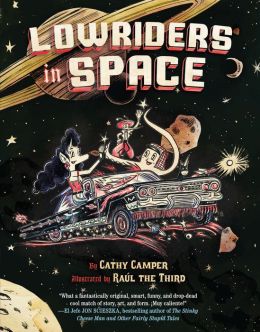 Lowriders in Space by Cathy Camper and Raúl the Third (Chronicle, $9.99, 9781452128696)
Lowriders in Space by Cathy Camper and Raúl the Third (Chronicle, $9.99, 9781452128696)
Lupe Impala, El Chavo Flapjack Octopus and Elirio Malaria are three Mexican-American friends who work on cars and dream of owning their own garage. While they have the skills to run a garage--Lupe is a mechanic extraordinaire, Flapjack is an expert polisher and Elirio is the best detail artist around--they don't have the money to start it. Luckily for them, the Universal Car Competition is just around the corner, and all they have to do to win a carload of cash is fix up their beat-up jalopy by raiding an old airplane factory and the expanse of outer space.
Beyond a light and fun story that's perfect for the middle-grade crowd, this book is incredibly enjoyable for two reasons: it features astronomical terms and concepts for kids to learn, though not always in a scientific way; and it features Mexican-American culture, something I appreciate and enjoy as a Mexican-American. I got a little thrill every time I recognized something from my childhood in the book (for example, Flapjack takes his name and look from El Chavo del Ocho, a character from a Mexican sitcom I watched nearly every day as a kid), but there is a glossary at the back for people who want to learn more. I learned that Aztecs also saw a rabbit in the moon, something I thought was only a Chinese concept.
Raúl's art resembles both the Mexican murals of Los Angeles and the line art in most kids' notebooks. It is beautiful even in black and white, and I have no doubt will look even better in color (I read a proof copy that did not include the full-color art that will be present in the final version).
Handselling Opportunities: Anybody interested in Mexican-American, or Chicano, culture, especially the lowrider culture, and anybody interested in light astronomy that includes historical and cultural markers, which could lead to longer love affair with the hard science.
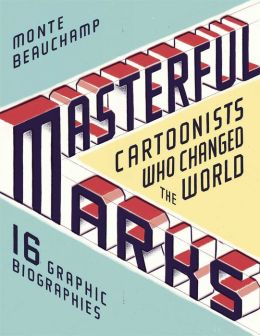 Masterful Marks: Cartoonists Who Changed the World by Monte Beauchamp et al. (Simon & Schuster, $24.99, 9781451649192)
Masterful Marks: Cartoonists Who Changed the World by Monte Beauchamp et al. (Simon & Schuster, $24.99, 9781451649192)
In my fantasy university course titled "The History of Comics," this book would be the first text assigned. With short graphic biographies of 17 of the greatest comic book, cartooning, animation, comic strip, comix, manga, picture book and gag strip creators, Masterful Marks is a perfect primer for the earliest days (and I mean earliest, with one subject born in 1799) of the various forms of comics and the mediums closely associated with it.
There are 16 biographies in all, on Jerry Seigel and Joe Shuster, Jack Kirby, Chas Addams, Winsor McKay, Charles Schulz, Hergé, Harvey Kurtzman, Robert Crumb, Al Hirschfeld, Walt Disney, Lynd Kendall Ward, Rodolphe Töpffer, Edward Gorey, Hugh Hefner, Osamu Tezuka and Dr. Seuss, written and drawn by some of today's most celebrated cartoonists. While they're all biographies, the comics nevertheless employ different methods of storytelling, which keeps the anthology from becoming repetitive. For example, Drew Friedman's chapter on R. Crumb focuses on how Friedman was influenced by Crumb during his formative years; Dan Zettwoch's chapter on Tezuka is told from the perspective of Tezuka and one of Tezuka's characters; and Nicolas Debon's chapter on Winsor McKay is stylized as a Little Nemo in Slumberland strip.
Besides their works and influences, each chapter also has many interesting tidbits about each cartoonist's life. One example: many early cartoonists were drafted and fought in World War II.
Handselling Opportunities: Anybody interested in the work and lives of early cartoonists.
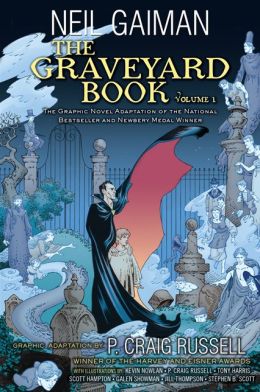 The Graveyard Book Volume 1 by Neil Gaiman, P. Craig Russell et al. (HarperCollins, $19.99, 9780062194817)
The Graveyard Book Volume 1 by Neil Gaiman, P. Craig Russell et al. (HarperCollins, $19.99, 9780062194817)
The Graveyard Book is one of my favorite Gaiman titles, and I was very excited when I heard it was going to be adapted into the comic book medium, more so when I realized it would be adapted by P. Craig Russell. He has masterfully adapted many works in his career, including a few short stories by Gaiman himself (do yourselves a favor and read Murder Mysteries if you haven't already), but he is probably best known for his adaptation of Richard Wagner's opera Der Ring des Nibelungen (which he will hopefully finish one day).
This first volume follows from the beginning of Nobody Owen's life in the graveyard to the Convocation of Jacks. Russell takes few liberties with Gaiman's novel, but his classically inspired art and layouts are clearly his own, even when not drawn by him. (Russell gets help from Kevin Nowlan, Tony Harris, Scott Hampton, Galen Showman, Jill Thompson and Stephen B. Scott, who all work from Russell's layouts and notes, giving the work a uniform feel even with artists known for such disparate styles.)
My only hesitancy about this adaptation is no fault of its creators. When reading the original novel, I had very strong visions of how the main characters looked, especially Bod, Jack, Silas, Miss Lupescu and the Sleer. But Russell and the other artists have portrayed them in an entirely different way (especially Silas and the Sleer). While it's interesting to see what other people imagine while reading The Graveyard Book, now I can no longer remember what my Bod, Jack, Silas and Miss Lupescu looked like (but I can still remember the Sleer because they were so creepy).
The second volume is available now, so make sure to pick that up, too.
Handselling Opportunities: Fans of Neil Gaiman (and who doesn't that cover) who won't mind seeing characters who might not look like what they imagined.
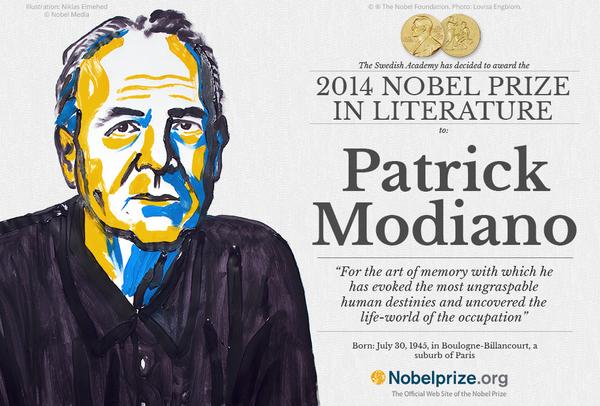 French novelist Patrick Modiano has won the Nobel Prize in Literature "for the art of memory with which he has evoked the most ungraspable human destinies and uncovered the life-world of the Occupation," the Swedish Academy said. The prize is worth 8 million kronor (about $1.1 million).
French novelist Patrick Modiano has won the Nobel Prize in Literature "for the art of memory with which he has evoked the most ungraspable human destinies and uncovered the life-world of the Occupation," the Swedish Academy said. The prize is worth 8 million kronor (about $1.1 million).





SHELFAWARENESS.1222.S1.BESTADSWEBINAR.gif)




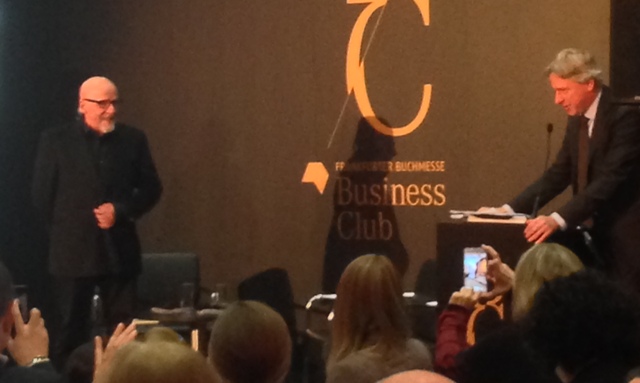

 The audiobook industry is "continuing to grow at a tremendous pace," with net sales in dollars up 12% in 2013, according to the
The audiobook industry is "continuing to grow at a tremendous pace," with net sales in dollars up 12% in 2013, according to the 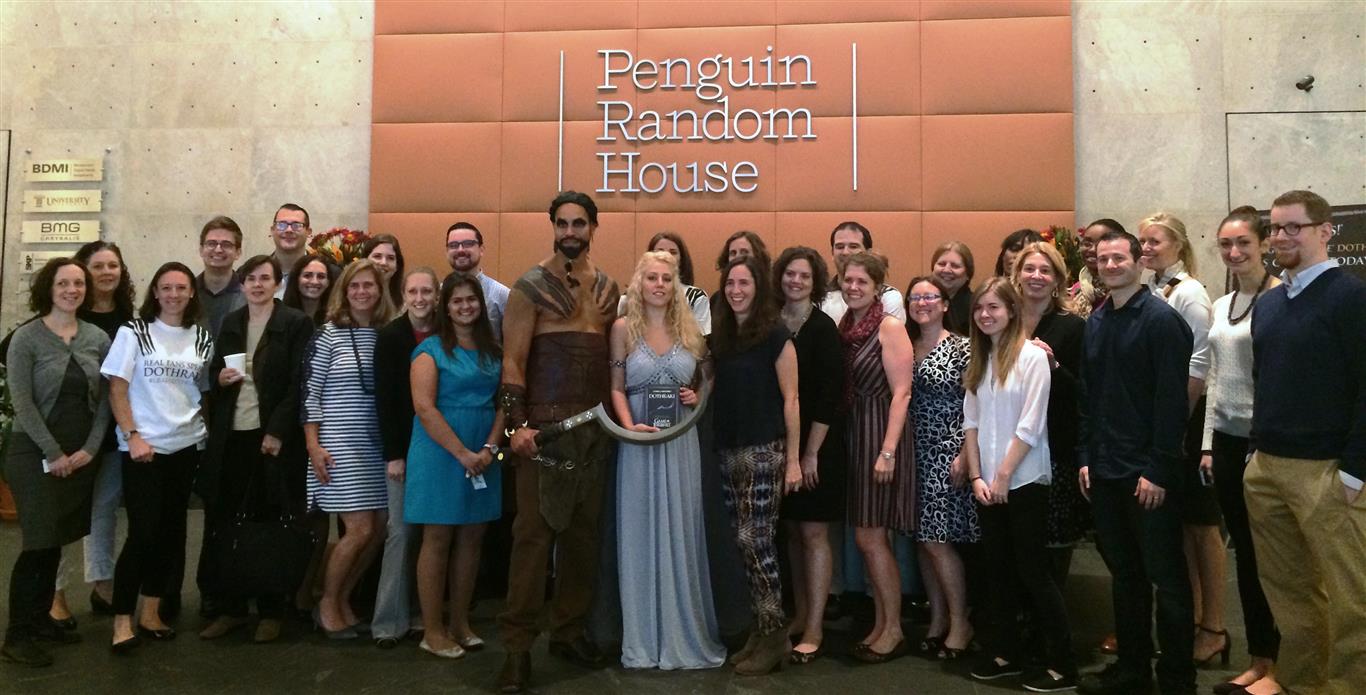 Athchomar chomakaan, khal vezhven! Khal Drogo and Khaleesi Daenerys paid a visit to the Penguin Random House lobby to mark the on-sale day of Living Language Dothraki, the first official course in the language developed for the HBO series Game of Thrones. Here the couple stand with the Living Language staff.
Athchomar chomakaan, khal vezhven! Khal Drogo and Khaleesi Daenerys paid a visit to the Penguin Random House lobby to mark the on-sale day of Living Language Dothraki, the first official course in the language developed for the HBO series Game of Thrones. Here the couple stand with the Living Language staff. What to Bake & How to Bake It
What to Bake & How to Bake It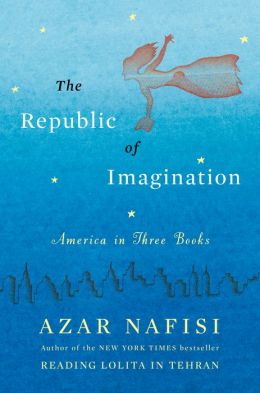 Several years ago, author and literature professor Azar Nafisi (Reading Lolita in Tehran) met a young Iranian man at a reading in Seattle. The man, who had recently emigrated to the U.S., had lived through the trauma of state-sanctioned intimidation in Iran: random car searches and arrests, the banning of Western books and music. He told Nafisi that Americans don't truly care about books: in their safe, comfortable homeland, they can't approach great literature with the hunger of Iranians reading photocopied pages of Flaubert or Hemingway behind closed doors.
Several years ago, author and literature professor Azar Nafisi (Reading Lolita in Tehran) met a young Iranian man at a reading in Seattle. The man, who had recently emigrated to the U.S., had lived through the trauma of state-sanctioned intimidation in Iran: random car searches and arrests, the banning of Western books and music. He told Nafisi that Americans don't truly care about books: in their safe, comfortable homeland, they can't approach great literature with the hunger of Iranians reading photocopied pages of Flaubert or Hemingway behind closed doors.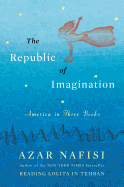
 Lowriders in Space by Cathy Camper and Raúl the Third (Chronicle, $9.99, 9781452128696)
Lowriders in Space by Cathy Camper and Raúl the Third (Chronicle, $9.99, 9781452128696) Masterful Marks: Cartoonists Who Changed the World by Monte Beauchamp et al. (Simon & Schuster, $24.99, 9781451649192)
Masterful Marks: Cartoonists Who Changed the World by Monte Beauchamp et al. (Simon & Schuster, $24.99, 9781451649192) The Graveyard Book Volume 1 by Neil Gaiman, P. Craig Russell et al. (HarperCollins, $19.99, 9780062194817)
The Graveyard Book Volume 1 by Neil Gaiman, P. Craig Russell et al. (HarperCollins, $19.99, 9780062194817)